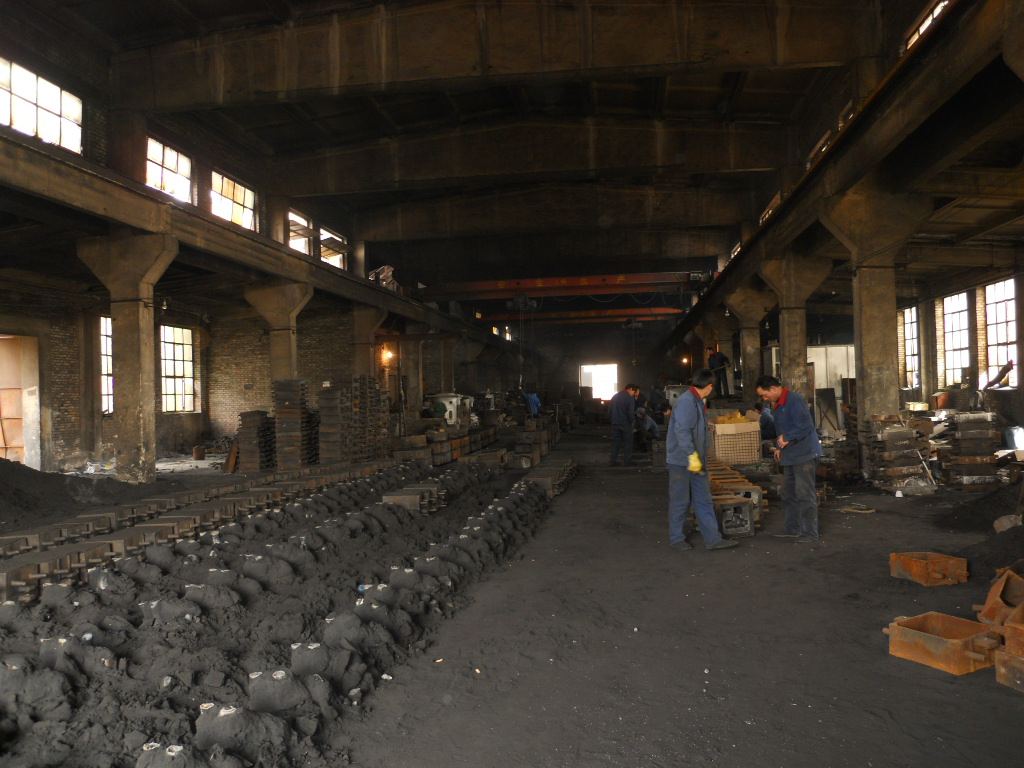+86 311 85258258
+86 311 85258258
Apr. 20, 2022
Green sand casting is one of the first and popular methods used in mold sand technology and often applied in metal casting foundries. This molding method is featured by using green sand as the main material to create the sand mold for the casting.

The green sand refers to a kind of wet-featured sand. The term “green sand” is not about the color of the sand but it expresses the moisture nature of the molding sand which is not dried or baked. The property of green sand in casting is wet. The sand is called green because of sand moisture as same as green wood before the moisture is dried out when the molten metal is poured into the sand mold.
As a molding method, green sand is very popular and easy to buy.
Nowadays, foundries apply green sand technology commonly in metalworking due to its outstanding advantages.
Below lists some of its major advantages.
1. Firstly, the average cost to produce the casting is affordable and reasonable because this mold casting method doesn’t require complicated processes and high-tech machinery.
2. Another benefit of this technology is its versatility with production. It allows any alloys to be poured into and is flexible in the choice of molds and patterns.
3. Furthermore, this mold casting technology is an environmentally friendly process where the aggregated mold can be treated and repeatedly used. The sand can be reused many times after adjusting the composition.
However, like other methods, this green sand molding method also remains some of the limitations.
1. Firstly, molds prepare for this process lack of permeability, strength, and stability. It cannot be stored in a long time and erosion is popular.
2. Secondly, it creates concerns about defects such as porosity, blowholes because of steam formation due to its moisture content.
3. Thirdly, the surface of the finished product is not smooth in comparison with other casing processes because of the fairly rough interface between molten metal and the sand mold.
4. Fourth, this mold casting method is also limited in size and difficult to cast complicated shapes.
Despite some limitations, foundries use green sand process widely because of its productive versatility and reasonable cost. There are numerous applications of this casting technique in the metalworking industry particularly.
With the property of bonding naturally, green sand mold has sufficient strength for almost sand casting applications.
In terms of casting material, it can be applied to cast both ferrous and nonferrous metals. This casting method can use for almost any alloys ranging from copper, aluminum, nickel, to magnesium.
In terms of design, it is suitable for simple, small, and medium-size casting, and mass production.
The above provides a brief and condensed explanation about the green sand method including definition, sand mixture, process, properties, and application of casting by green sand technology.
Generally, Green sand casting is an efficient and economic process. At Vietnam Cast Iron, with numbers of high skillful and expert labors and high-tech machinery, we could manufacture almost any products by this molding technology, from a lamppost, counterweight, manhole cover, pump casing to trash bin, railing, gas burner, etc.
We work with our customers to decide the best casting processes resulting best quality for final products and minimizing the buying cost.
For many years, Zen Young Foundry has been providing customized metal casting services for various industries and project types.
Mining & Engineering Machinery Casting Parts
If you are looking for a solution that fits your custom metal Sand casting project, Zen Young can help you produce perfect metal parts through a reliable casting process.
We always welcome special material and difficult parts and would like to help our comstomers utmost.
The material used to make molds for sand casting is sand, not ceramics. Due to the roughness of sand, sand casting is most commonly used for large castings, which usually require less detail precision and tolerances.
Shell mold casting is a metal casting process similar to sand casting, in that molten metal is poured into an expendable mold. However, in shell mold casting, the mold is a thin-walled shell created from applying a sand-resin mixture around a pattern. The pattern, a metal piece in the shape of the desired part, is reused to form multiple shell molds. A reusable pattern allows for higher production rates, while the disposable molds enable complex geometries to be cast. Shell mold casting requires the use of a metal pattern, oven, sand-resin mixture, dump box, and molten metal.
Investment casting is one of the traditional casting methods. That is, the metal is heated to the temperature of the molten liquid, and then the material is poured into a mold designed with a suitable negative space and gated to effectively completely fill the molten metal. Once the metal has cooled and solidified, the metal part can be removed from the mold for finishing. Investment casting, also known as lost wax casting, is usually used to make jewelry and metal parts with complex shapes.
Die casting is a kind of metal casting process, which is characterized by forcing molten metal under high pressure into the forming cavity. The cavity is made using two hardened tool steel molds, which have been processed into a certain shape, and die casting works similarly to injection molds.
Lost foam casting is a type of evaporative pattern casting. it maintains outstanding advantages, especially in casting complicated and precise molds.Unlike traditional methods which include the pattern withdrawn process before casting and require skillfulness in the pattern removal step, with respect to the lost foam method, the pattern is evaporated when the molten metal is poured into helping to reduce these considerations.
We will choose different casting methods for processing according to the product shape, material and your working conditions. Many years of processing experience can guarantee the quality of the casting parts.